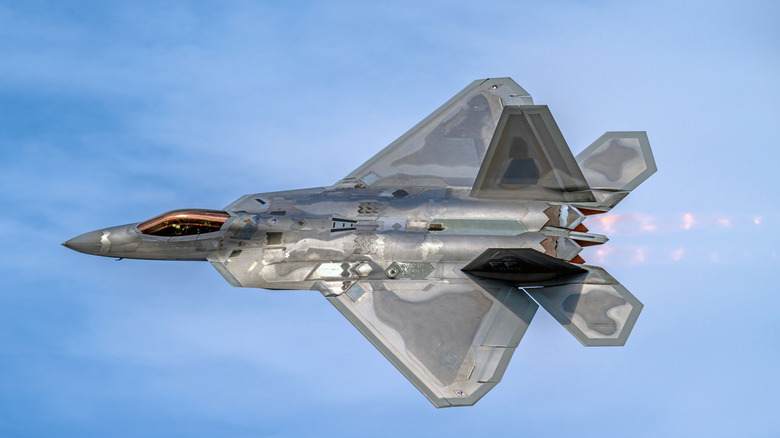How Far Can an F-22 Fly on a Single Tank?

The F-22 Raptor: A Fighter Jet with Unique Capabilities
The F-22 Raptor stands out among fighter jets for its exceptional performance and technological advancements. One of its most remarkable features is its ability to supercruise, which means it can maintain speeds above Mach 1 without the need to activate its afterburners. This capability is rare in the world of military aviation, as most fighter jets require afterburners to break the sound barrier, which significantly reduces their range due to high fuel consumption.
Supersonic flight is typically reserved for short bursts rather than sustained cruising because of the fuel inefficiency associated with afterburners. The F-22’s supercruise ability gives it a significant advantage in terms of operational flexibility and endurance at higher speeds. However, even this advanced aircraft has limitations when it comes to how long it can remain airborne.
To extend its range, the F-22 is designed to be refueled mid-flight using aircraft like the KC-135 Stratotanker. This allows the jet to potentially fly indefinitely, provided there are refueling opportunities available. Despite this, the natural range of the aircraft remains an important factor in mission planning, especially when aerial refueling is not an option.
When equipped with external fuel tanks, the F-22's maximum range reaches approximately 1,850 miles. In a hypothetical scenario where the aircraft maintains supersonic speeds throughout its journey, it could reach around Mach 2, or 1,500 mph. However, under these conditions, the jet would only be able to fly for about an hour and 15 minutes before needing to refuel. These figures are approximate and subject to various factors such as altitude, weather, and mission parameters.
Variations in Performance Based on Configuration
The F-22's performance varies depending on its configuration and operating conditions. For example, its speed is affected by altitude. At higher altitudes, such as 50,000 feet or more, the aircraft can achieve speeds of Mach 2 or higher. In contrast, at sea level, where air density is greater, the F-22's maximum speed drops to around Mach 1.21, or 921 mph.
Under these lower-altitude conditions, the aircraft could theoretically fly for up to two hours if it starts with full external fuel tanks. This highlights how different environmental factors influence the jet’s performance and fuel efficiency.
According to Holloman Air Force Base, an F-22 can sustain flight for up to two and a half hours when flying at higher altitudes, provided it does not engage its afterburners. This underscores the importance of altitude in extending the aircraft’s endurance.
Training and Tactical Use of Supersonic Flight
While the F-22 is capable of flying at supersonic speeds, it is not used constantly for this purpose. Maj. Chris "Bandit" Bergtholdt emphasized that supersonic flight is part of the F-22's tactical training, and pilots must be proficient in this capability. Training flights often involve flying faster than the speed of sound, sometimes up to five times during a single mission.
Despite its advantages, supercruise still consumes more fuel than subsonic flight. This means that longer missions must be planned around refueling opportunities, whether through aerial refueling or ground-based support. Pilots and mission planners must carefully balance the benefits of high-speed flight with the constraints of fuel capacity and operational logistics.
Conclusion
The F-22 Raptor represents a pinnacle of modern fighter jet technology, combining supercruise capabilities, advanced maneuverability, and strategic refueling options. Its performance varies widely depending on altitude, configuration, and mission requirements. While supersonic flight offers tactical advantages, it also presents challenges related to fuel efficiency and mission planning. As a result, the F-22’s use of afterburners and supersonic speeds is carefully managed to maximize effectiveness while ensuring operational sustainability.
Post a Comment for "How Far Can an F-22 Fly on a Single Tank?"
Post a Comment